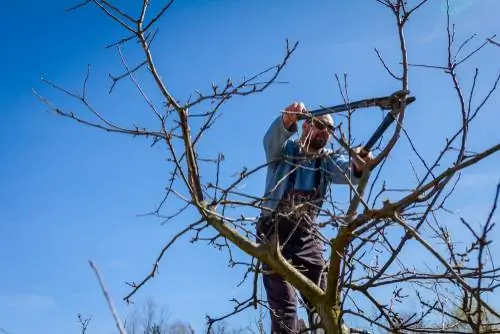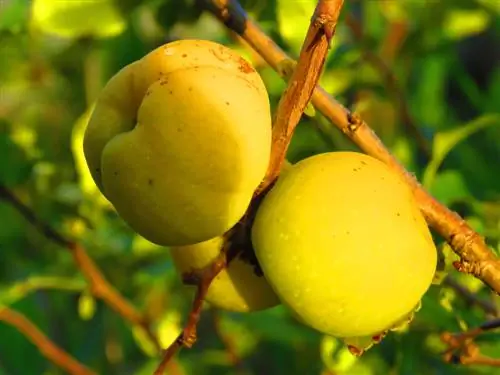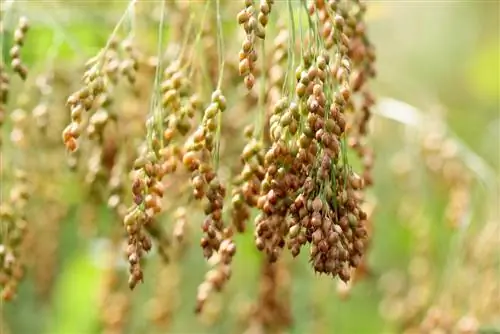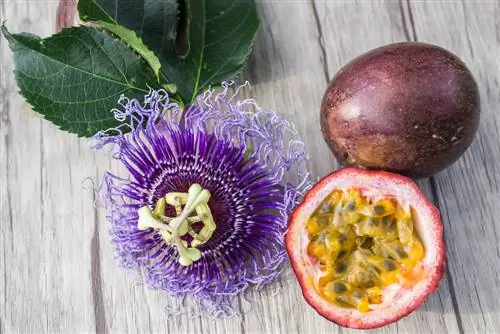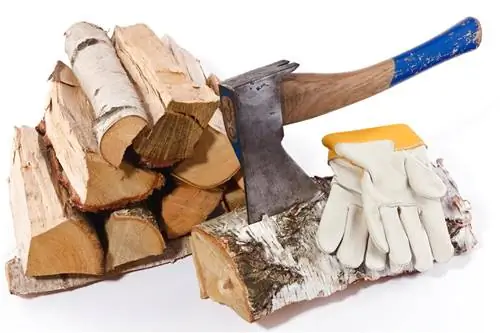- Author admin [email protected].
- Public 2023-12-16 16:46.
- Last modified 2025-01-23 11:21.
A quince tree blooms in sync with roses and provides tasty fruit in autumn. This process should not be disturbed by cutting measures. Nevertheless, regular pruning care is beneficial for flowering and vitality. Read this guide to find out when and how to properly cut a quince.
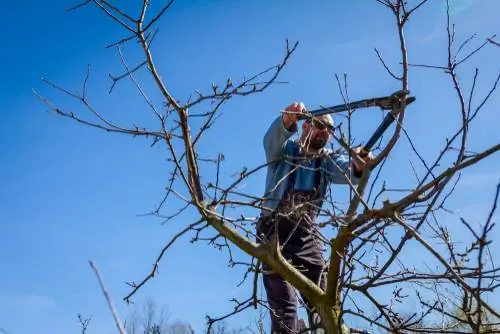
How to properly prune a quince tree?
A quince tree should be trimmed in late February to early March. For a successful cut, it is important to revitalize exhausted fruit wood, thin out the crown at 3-year intervals and remove dead wood and unfavorably growing branches. Watch out for dry weather and temperatures above freezing.
Best time is the end of February
The ideal time window for pruning the quince tree is from the end of February to the beginning of March. This recommended date takes into account the sensitivity of a quince to frost and the requirements of the Federal Nature Conservation Act equally. Please choose a day with dry weather and temperatures above freezing.
Preservation revitalizes exhausted fruit wood
A quince tree takes four to eight years until it bears its first fruit. On the way there, cutting measures are of secondary importance. When entering the yield phase, the Asian pome fruit tree benefits from fruit pruning. After three to four years, heavily branched fruit shoots hang down and signal that they have passed the peak of their productive potential. With this cut you can revitalize exhausted fruit wood of a quince:
- Excessively long scaffold shoots that lean towards the ground lead to a younger side shoot
- Redirect worn, broom-like fruit wood to a side branch closer to the trunk
- Cut old fruiting wood without young side shoots back to 5-10 cm short cones
Please do not cut off exhausted fruit wood on Astring. In the quince tree, this cut is associated with the risk of rot. It's better if you leave a short stub first. By the next year, young branches will sprout from it while the cone dries up. Select one or two outward-facing, horizontal young shoots. All remaining specimens as well as the dried cone remains are removed.
Thinning out quinces at 3-year intervals
As long as your quince tree thrives with vital fruit wood, pruning care is limited to removing dead wood and awkwardly positioned branches. Quinces tend to grow disorderly with criss-cross shoots. This affects a light-flooded, airy crown so that numerous flowers and fruits can develop. This is how you thin out a quince tree correctly:
- Thinning out the crown every 2 to 3 years
- Cut dead wood to short tenons
- Cut back weak, frozen and unfavorably growing branches by up to three quarters
- Place the pruning shears just above an outward-facing bud
If you discover water shoots that point steeply upwards on leading branches, their position will decide what to do next. Do not cut off the shoot in a sunny spot. Rather, tie the steep shoot into a sloping to horizontal position. Now the sap pressure calms down, whereupon flower buds form.
Tip
An apple quince remains a quince and is not cut like an apple tree. The name pear quince or apple quince simply refers to the shape of the fruit. Please do not draw any conclusions about pruning care from these variety names, but rather consult these instructions.

